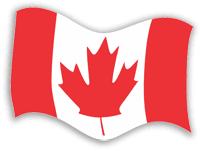|
The Liberal Party dates back to political struggles in Great
Britain’s North American colonies in the 1820s and 1830s. The
term Liberal originally applied to opponents of authoritarian
royal government in Europe, and the opponents (reformers) of the
British-appointed colonial governments easily adopted it. When
democratic government was finally achieved in the colonies in
the 1840s, Reformers or Liberals favoured measures that promoted
equality of opportunity and opposed what they saw as special
privileges for vested interests. In Lower Canada (later Quebec)
this put them at odds with the Catholic Church, a considerable
electoral handicap. Quebec apart, the Liberal issues of the
1840s became the political consensus of the 1860s, and as a
result the actual differences between Liberals and their
Conservative opponents were relatively minor. Politics tended to
become a contest between “ins” and “outs”, with each party
searching for issues that would distinguish it from the other.
After Confederation, the Liberals enjoyed a brief period in
government in the 1870s, but were regularly outclassed by the
talented Conservative John A. Macdonald. Happily, the Liberals
in 1887 chose an eloquent and charismatic Quebec politician,
Wilfrid Laurier — a daring choice because Canada’s
English-Canadian majority was still inclined to fear and
distrust its French fellow-citizens and their Catholic religion.
The Liberals under Laurier handily won the election of 1896, and
remained in power until 1911. They adopted and expanded most of
the Conservatives’ financial policies, but thanks to good
economic times, they could also embark on a program of railway
building and greatly expanded immigration. Laurier would have
preferred to stay away from foreign relations, but circumstances
made him the first prime minister to send Canadian troops
abroad, to fight in the British cause in the South African War
(1899-1902). But Laurier was not pro-British enough for many
English Canadians; ironically, he was thought to be entirely too
British by many
French Canadians. He lost the 1911 election, heavily in English
Canada, and not quite as heavily in Quebec, where he and the
Liberals remained the most powerful and credible political
force.
Although Laurier supported Canada’s participation in the First
World War, he would not support the government’s policy of
conscription for the army, forcing an election in 1917. The
Liberals split, lost heavily in English Canada, but in Quebec
won overwhelmingly, keeping both the Conservatives and
French-Canadian nationalists at bay. When Laurier died in 1919,
the Liberals chose one of his former ministers, William Lyon
Mackenzie King, who had remained loyal in 1917, to succeed him.
King proved to be the most successful politician in Canadian
history. Prime minister for 22 years between 1921 and 1948, he
survived the Great Depression and the Second World War, winning
six out of seven elections in that time. King recruited
exceptionally strong and usually very competent ministers, and
left the Liberals in very good shape for his successor, Louis
St. Laurent. Though not a skilled politician, St. Laurent
benefited, like King, from a strong government and a prosperous
economy. Eventually, in 1957, he lost, but the inability of the
Conservatives to maintain a stable government brought the
Liberals under Lester B. Pearson back to power in 1963.
Pearson’s Liberal government relied on Canada’s prosperity to
create and fund a comprehensive system of social welfare, most
notably Medicare, while attempting to deal with the first stages
of a 30 year crisis in Canadian relations with a separatist
movement in Quebec. Pearson recruited strong ministers from
Quebec to fight separatism, especially Pierre Elliott Trudeau, a
Montreal intellectual.
Trudeau narrowly won the Liberal leadership in a convention in
1968. Though relatively inexperienced as a politician, he proved
to be a charismatic leader, winning elections in 1968, 1972,
1974 and 1980, losing only once in 1979. When a separatist
government was elected in Quebec in 1976, Trudeau led the
federal response, defeating the separatists in a provincial
referendum in 1980. He reformed the constitution, creating for
the first time a method for amending it in Canada and rammed
through a Charter of Rights and Freedoms in the teeth of
provincial resistance. But Trudeau’s energy policies did not
help the Liberals in the West, and his confrontational style
eventually created so many enemies that the Liberals were
overwhelmingly defeated under his successor, John Turner, in
1984.
Although the Liberals opposed free trade with the United States
in the 1988 election, which they lost, they accepted it when
they returned to government under Jean Chrétien in 1993. Chrétien’s government was fiscally conservative
and relatively unadventurous in foreign policy. He sent troops
to Afghanistan, but resisted pressure to join in the unpopular
war in Iraq. By the end of his time in office Chrétien’s Liberals were bitterly
divided into competing factions, and his successor, Paul Martin,
lost the 2006 election. The Liberals have since experimented
with two leaders, without finding the magic formula that would
return them to office.
Next Instalment: The CCF and NDP
The Canadian Experience is a 52-week history series
designed to tell the story of our country to all Canadians.
Sponsored by Multimedia Nova Corporation and Diversity Media
Services/Lingua Ads partners, the series features articles by
our country’s foremost historians on a wide range of topics.
Past articles and author bios are available at
http://www.cdnexperience.ca.
The Canadian Experience
is copyright © 2010-2011 Multimedia Nova Corporation.
|
|


